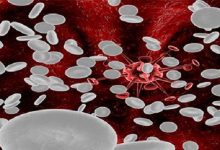Asthma in Adolescence: Precautions and Measures
Asthma, a chronic respiratory condition characterized by airway inflammation and hyperreactivity, often begins in childhood but can significantly affect adolescents as well. The transition from childhood to adolescence brings unique challenges and considerations for managing asthma effectively. This article explores the particular concerns associated with asthma in teenagers and provides comprehensive strategies for managing the condition.
Understanding Asthma in Adolescence
Asthma is a condition that causes the airways to become inflamed and narrow, making it difficult to breathe. In adolescents, the disease may present differently compared to younger children or adults. During this developmental stage, hormonal changes, increased independence, and lifestyle factors can influence asthma management and symptoms.
Common Symptoms
Symptoms of asthma in teenagers include:
- Frequent coughing, especially at night or early morning.
- Wheezing or a whistling sound when breathing.
- Shortness of breath or rapid breathing.
- Chest tightness or pain.
Challenges in Managing Asthma During Adolescence
1. Hormonal Changes:
Adolescence involves significant hormonal fluctuations that can affect asthma symptoms. Hormones like estrogen and progesterone may influence airway inflammation and bronchial responsiveness.
2. Lifestyle Factors:
Teenagers often engage in activities such as sports, which can trigger exercise-induced asthma. Additionally, lifestyle choices, including smoking or exposure to secondhand smoke, can exacerbate asthma symptoms.
3. Independence and Adherence:
As adolescents seek greater independence, they might become less diligent about following their asthma management plan. This includes forgetting to take medications or not using inhalers correctly.
4. Peer Pressure:
Teenagers may face peer pressure to smoke or use substances, which can trigger or worsen asthma symptoms.
Precautions for Adolescents with Asthma
1. Regular Medical Check-Ups:
Adolescents with asthma should have regular follow-ups with their healthcare provider to monitor their condition and adjust treatment plans as needed.
2. Medication Adherence:
It is crucial for teenagers to adhere to their prescribed medication regimen. This includes both long-term control medications and rescue inhalers. Educating teens on the importance of medication adherence can help improve compliance.
3. Avoiding Triggers:
Identifying and avoiding asthma triggers is essential. Common triggers include allergens (like pollen, dust mites, and pet dander), smoke, strong odors, and cold air. Teens should be encouraged to avoid known triggers whenever possible.
4. Managing Exercise-Induced Asthma:
For teens involved in sports or physical activities, pre-exercise medication and proper warm-up routines can help manage exercise-induced asthma. It is important for them to communicate with coaches and physical education teachers about their condition.
5. Smoking Prevention:
Education about the dangers of smoking and exposure to secondhand smoke is vital. Teens should be aware that smoking can significantly worsen asthma and overall lung health.
6. Emergency Plan:
Developing an asthma action plan that includes steps to take during an asthma attack is essential. This plan should be reviewed with both the adolescent and their family to ensure everyone is prepared for emergencies.
Effective Management Strategies
1. Educate and Empower:
Providing education about asthma and its management helps adolescents understand their condition and make informed decisions. Involvement in managing their asthma can increase a teen’s adherence to treatment.
2. Support System:
Creating a support system that includes family, friends, and school personnel can assist in managing asthma effectively. Schools should be informed about the student’s condition and have plans in place for emergencies.
3. Healthy Lifestyle:
Promoting a healthy lifestyle, including a balanced diet and regular exercise, can improve overall health and asthma control. Ensuring that exercise routines are adjusted to accommodate asthma needs can help maintain physical fitness without triggering symptoms.
4. Mental Health:
Asthma can impact mental health, leading to anxiety or depression, especially if symptoms are severe or poorly managed. Providing access to mental health resources and counseling can be beneficial.
5. Use of Technology:
Utilizing asthma management apps and digital tools can help teens track their symptoms, medication use, and triggers. These tools can provide reminders and educational resources, enhancing self-management skills.
Conclusion
Managing asthma in adolescence requires a multifaceted approach that considers the unique challenges of this developmental stage. By addressing hormonal changes, lifestyle factors, and medication adherence, teens can better control their asthma and lead active, healthy lives. Involvement in their own care, along with a supportive environment, plays a crucial role in achieving optimal asthma management. With appropriate precautions and effective strategies, adolescents with asthma can navigate their teenage years while managing their condition successfully.




